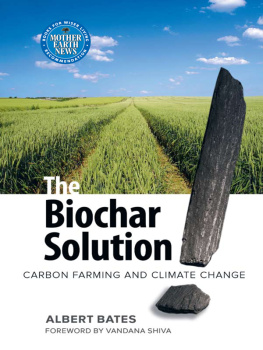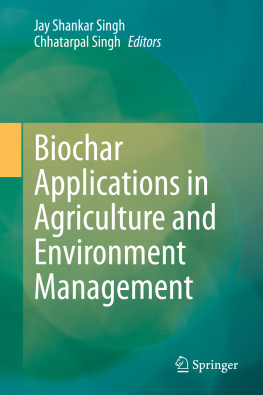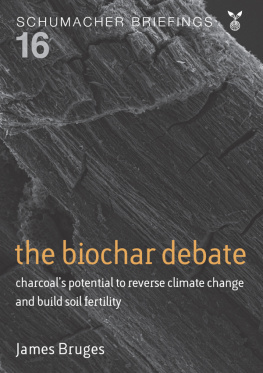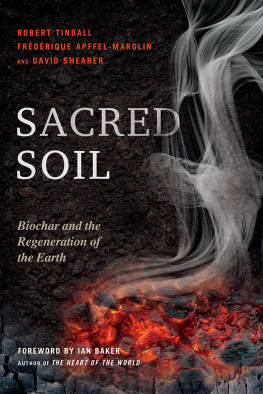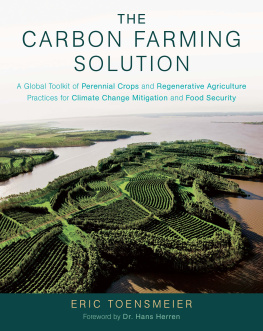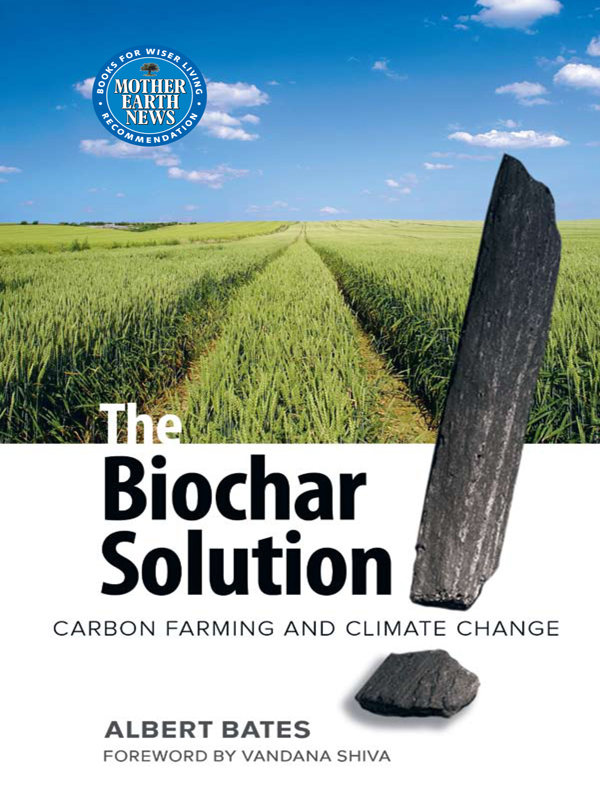
by Dr. Vandana Shiva
Cultivating the Future
F ERTILE SOILS RICH IN ORGANIC MATTER are our best insurance against food insecurity and climate vulnerability. Soil is a major store of carbon, containing three times as much carbon as the atmosphere and five times as much as forests. About 60% of this is in the form of organic matter in the soil. The principal component of soil carbon is humus, a stable form of organic carbon with an average lifetime of hundreds to thousands of years.
Soil organic matter determines much of the soils quality, as it is an important substrate of cationic exchange, is the warehouse of most of the nitrogen, phosphorous and sulphur potentially available to plants, is the main energy source of micro-organisms and is a key determinant of soil structure, (J. Ewel, Designing Agricultural Ecosystems for the Humid Tropics, Annual Review of Ecology and Systematics, 17:245-271)
A pioneer of organic agriculture, Sir Albert Howard defined fertile soils as follows:
a soil teeming with healthy life in the shape of abundant microflora and microfauna, will bear healthy plants, and these, when consumed by animals and man, will confer health on animals and man. But an infertile soil, that is, one lacking sufficient microbial, fungous, and other life, will pass on some form of deficiency to the plant, and such plant, in turn, will pass on some form of deficiency to animals and man.
The millions of organisms found in soil are the source of its fertility. The greatest biomass in soil consists of microorganisms, fungi in particular. Soil microorganisms maintain soil structure, contribute to the biodegradation of dead plants and animals, and fix nitrogen. Their destruction by chemicals threatens our survival and our food security.
Industrial agriculture treats soil as an empty container for industrial fertilizers. After World War I, manufacturers of explosives, whose factories were equipped for the fixation of nitrogen, had to find other markets for their products. Synthetic fertilizers provided a convenient conversion for peaceful uses of war products. Howard identified this conversion as closely linked to the NPK mentality of chemical farming:
The feature of manuring of the west is the use of artificial manures. The factories engaged during the Great War in the fixation of atmospheric nitrogen for the manufacture of explosives had to find other markets, the use of nitrogenous fertilizers in agriculture increased, until today the majority of farmers and market gardeners base their manurial program on the cheapest forms of nitrogen (N), phosphorous (P), and potassium (K) on the market. What may be conveniently described as the NPK mentality dominates farming alike, in the experimental stations and in the countryside. Vested interests entrenched in time of national emergency, have gained a stranglehold.
After the Wars, there was cheap and abundant fertilizer in the west, and American companies were anxious to ensure higher fertilizer consumption overseas to recoup their investment. The fertilizer push was an important factor in the spread of new seeds, because wherever the new seeds went, they opened up new markets for chemical fertilizers.
This is how industrial agriculture was introduced as the Green Revolution in India in the 60s. However, replacing soil fertility with chemical fertilizers was neither green nor revolutionary. It was a recipe for destroying soils, eroding food security and increasing green house gases which contribute to climate change. (Vandana Shiva, Violence of the Green Revolution, Zed Books, 1989)
However, the myth of the green revolution continues. On September 6, 2010 Time magazine stated in its cover story on the real cost of organic food, Norman Borlaug, the so called father of the green revolution, who nearly doubled wheat yields in Pakistan and India in the 60s via a combination of high yield plants and fertilizer use, is often credited with saving one billion lives.
This account is false on many counts. Firstly, the so called high yielding varieties are in fact high response varieties, engineered to withstand high doses of chemicals. Secondly, the increase in wheat production, which is assigned to chemicals and chemically adapted seeds, can be accounted for by any increase in land under wheat cultivation, and any increase in water provided for irrigation. Thirdly, high-cost external input agriculture is the reason for hunger. It has not saved a billion lives.
What the green revolution narrative ignores is decline in overall output, increase in costs of cultivation, and the destruction of the soil. Food security rests on soil building, not on poisoning the soil with toxics and burdening farmers with debt. Over the past decade, 200,000 farmers have committed suicide in India due to indebtedness resulting from high cost seeds and chemicals.
Building soil means building the soil food web in all its diversity and complexity. We need to build living soils because they are the very source of life. We need to build living soils because they provide diverse and multiple ecological services, including conservation of water and maintenance of the hydrological cycle. We need to build living soils because they are the basis of food security. And we need to build living soils because they provide climate resilience.
Living soils grow from living carbon. And living carbon is the result of the process of photosynthesis. As Sir Albert reminds us life is maintained by the suns energy and the instrument for intercepting this energy and turning it to account is the green leaf...
The green leaf, with its chlorophyll battery, is therefore a perfectly adapted agency for continuing life. It is, speaking plainly, the only agency that can do this, and is unique. Its efficiency is of supreme importance. Because animals, including man, feed eventually on green vegetation, either directly or through the bodies of other animals, it is our sole final source of nutriment. There is no alternative supply. Without sunlight and the capacity of the earths green carpet to intercept its energy for us, our industries, our trade, and our possessions would soon be useless. It follows therefore that everything on this planet must depend on the way mankind makes use of this green carpet, in other words on its efficiency. (Sir Albert Howard, Soil and Health, University Press of Kentucky).
So for building soil we need to increase the green cover on the planet, both in forests and on farms. On our farms we need to shift from chemical and fossil fuel intensive monocultures to biodiversity and biodiversity intensive systems that multiply the production of living carbon with all the nutrients needed by the soil, plants and animals (including humans).
In The Biochar Solution Albert Bates walks us through the history of sustainable farming practices, the climate crisis, and the role of organic farming and building organic matter in soils in mitigation and adaptation to climate change. I fully endorse his vision of the world evolving into a garden. But I would like to sound a word of caution.
By shifting our concern from growing the green mantle of the earth to making charcoal, biochar solutions risk repeating the mistakes of industrial agriculture. The reductionist NPK mentality is replaced by a reductionist carbon mentality. The false assumption that soil fertility comes from factories is maintained. Earlier it focused on factories producing NPK, now it focuses on industrial production of biochar.
Just as industrial agriculture and the green revolution forgot about life, the biochar solutions are ignoring life with their carbon preoccupation, an example of what I have called the Monocultures of the Mind.
Next page
